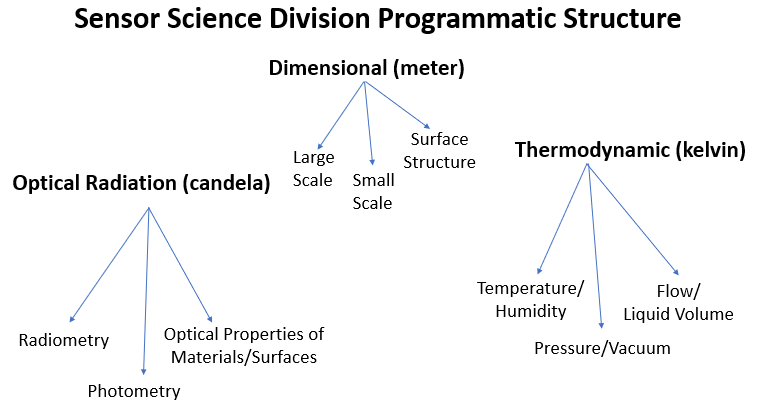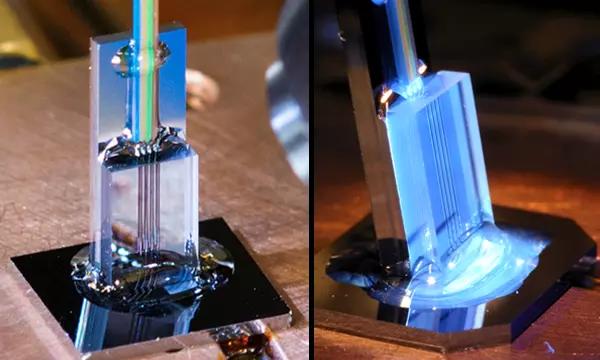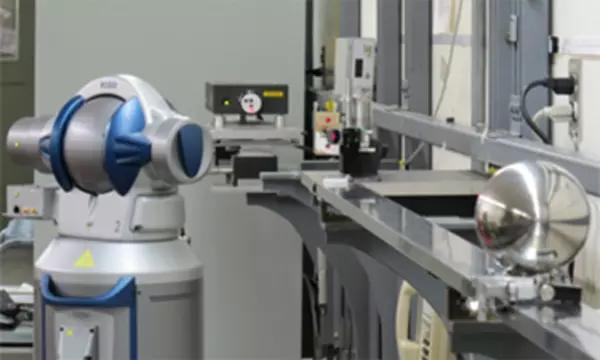Welcome to the Sensor Science Division
The Sensor Science Division (SSD) is based in Gaithersburg, Maryland, and operates within the Physical Measurement Laboratory at NIST.
Our Vision is to be the primary driver for innovation in the SI-traceable measurement of dimensional, thermodynamic, optical radiation, fluid flow, and air speed quantities. Our work enables the next generation of equitable standards to promote US economic growth and security.
Our Mission is to foster the next generation of SI-traceable dimensional, thermodynamic, optical radiation, fluid flow, and air speed measurements and their application by providing calibrations, standards, and innovations that improve U.S. industrial competitiveness and quality-of-life.
SSD has institutional responsibility for the realization and dissemination of 3 of the 7 base units of the International System of Units (SI): the meter, the kelvin, and the candela. To promote world-wide standardization, SSD staff engage with the Consultative Committees for Length (CCL), for Mass and Related Quantities (CCM), for Photometry and Radiometry (CCPR), and for Thermometry (CCT) under the International Committee for Weights and Measures (CIPM). This participation helps ensure the international comparability and international recognition of the SI-based measurements and standards disseminated by the Division. As pictured below, the division is divided into 3 technical areas which align with these 3 base SI units.

The division provides measurement science, reference materials, reference data, and technologies to foster innovation and confidence in measurements needed to advance these fields. In partnership with U.S. industry, government agencies, and scientific institutions, SSD performs fundamental and applied research on the measurement of length; temperature; infrared-to-extreme-ultraviolet radiation; pressure and vacuum; surface and interface optical and dimensional properties; gas and liquid flow; liquid volume; and humidity.
Focus Areas
- Measurement Services and Standards Development
- Large- and Small-Scale Dimensional Metrology
- Pressure/Vacuum and Temperature/Humidity
- Ambient and Low-Background Infrared Metrology
- Optical Properties of Materials
- Climate Change, Greenhouse Gas, and Space Weather Metrology
- Flow and Volume Metrology & its Application to the Energy Sector
- Surface Texture Metrology & its Application to Firearm Forensics
- Photometry & its Application to Solid-State Lighting
- EUV Metrology using SURF III for Application to EUV Lithography
News and Updates
Awards
Press Coverage
Patents
Contacts
Division Chief
-
(301) 975-4632
Office Manager
-
(301) 975-4926













